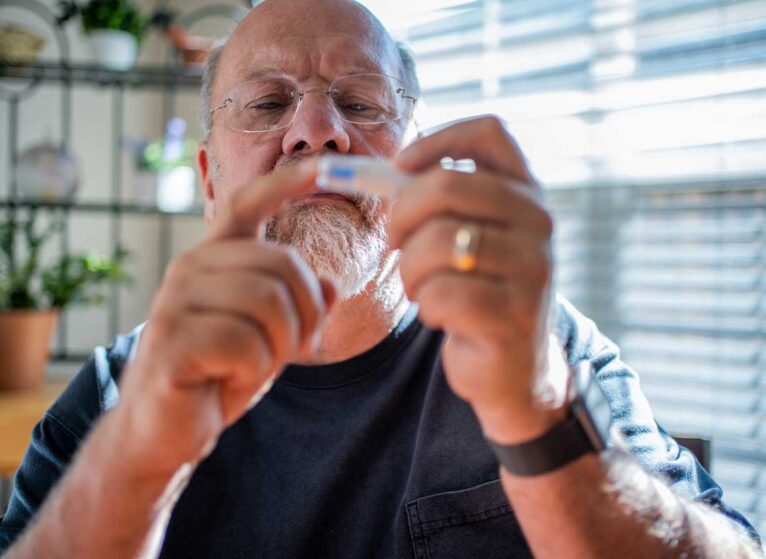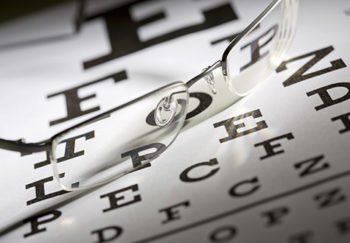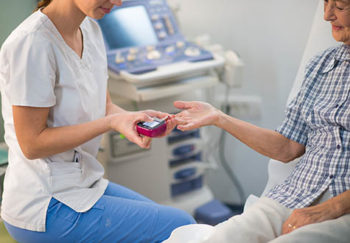Anyone living with type 2 diabetes knows that high blood sugar comes with the territory. And they know what to do to treat it. But if your blood sugar gets too high, you can get dehydrated. And that can make your blood sugar go even higher. This combination is a diabetic emergency. So you need to know how to prevent and spot it.
We turned to a diabetes expert to explain how high is too high, what causes extreme blood sugar levels, and how to spot a diabetic emergency so you can get medical help right away.
High Blood Sugar + Dehydration = Danger
With extreme blood sugar levels — typically over 600 mg/dL — your blood doesn't have enough fluid in it.
“When the levels in your bloodstream get really high, it draws water out of your body tissues to dilute the sugars. I explain it to patients as the sugars are really sticky,” says UVA Health endocrinologist Meaghan M. Stumpf, MD.
She adds, "Your kidneys then try to filter out the extra glucose and fluid. That causes this state of profound dehydration."
That combo of high blood sugar and extreme dehydration can lead to hyperosmolar hyperglycemic state (HHS). It’s also called hyperosmolar hyperglycemic nonketotic syndrome (HHNS).
High blood sugar alone isn’t HHS. HHS is a diabetic emergency that requires immediate help.
Risk Factors for a Diabetic Emergency
Fortunately, a diabetic emergency from HHS is not very common. But it can be serious when it occurs.
Stumpf says, "It's usually because something's happened to increase blood sugars." That could be:
- Infections like pneumonia or urinary tract infection
- Steroids and other medications
- Stopping or not adjusting diabetes medicine
"Often patients don’t expect their blood sugars to rise so high and so quickly. The problem can snowball,” Stumpf adds.
Warning Signs of a Diabetic Emergency from HHS
These could be a sign of an HHS emergency. It's important to know these if you or a loved one has type 2 diabetes. But these HHS signs can also happen in someone not yet diagnosed with diabetes:
- Blurry vision
- Dry mouth or increased thirst
- Increased urination
Changes in mental status are another hallmark of the condition. "People will start feeling sleepy or more irritated than usual. A loved one is going to notice something's not right," says Stumpf.
4 Ways to Prevent a Type 2 Diabetic Emergency
You can’t always control whether you develop HHS. But you can take a few steps to catch this before it becomes a diabetic emergency:
- Check your blood sugar often.
- Drink enough sugar-free fluids.
- Contact your doctor if you notice your blood sugar rising.
- Contact your doctor if you lose fluids through dehydration, diarrhea, or vomiting.
Is HHS the Same as Diabetic Ketoacidosis?
No. HHS is sometimes compared to diabetic ketoacidosis (DKA). But they are two different diabetic emergencies. People with type 1 diabetes can get DKA if they don’t have enough insulin to use sugar for energy.
Need Help Managing Your Diabetes?
Get care from the diabetes experts at UVA Health.
This causes their body to create ketones for energy and their blood to become acidic. HHS often comes on slowly. DKA can develop suddenly. Both HHS and DKA can cause altered mental status.
What to Do When In a Hyperosmolar Hyperglycemic State
Once blood sugars get too high, it’s time to get help for you or your loved one with this diabetic emergency:
- If you are alert and mentally aware, call your doctor right away.
- If you have a glucose level over 600, call 911 now.
Treating a Diabetic Emergency from HHS
Most people who develop HHS get admitted to the hospital for treatment. You usually need IV fluids for hydration and IV insulin to lower your blood sugar.
You may also need electrolytes to balance the minerals in your body. If you have an infection, that will get treated too.


